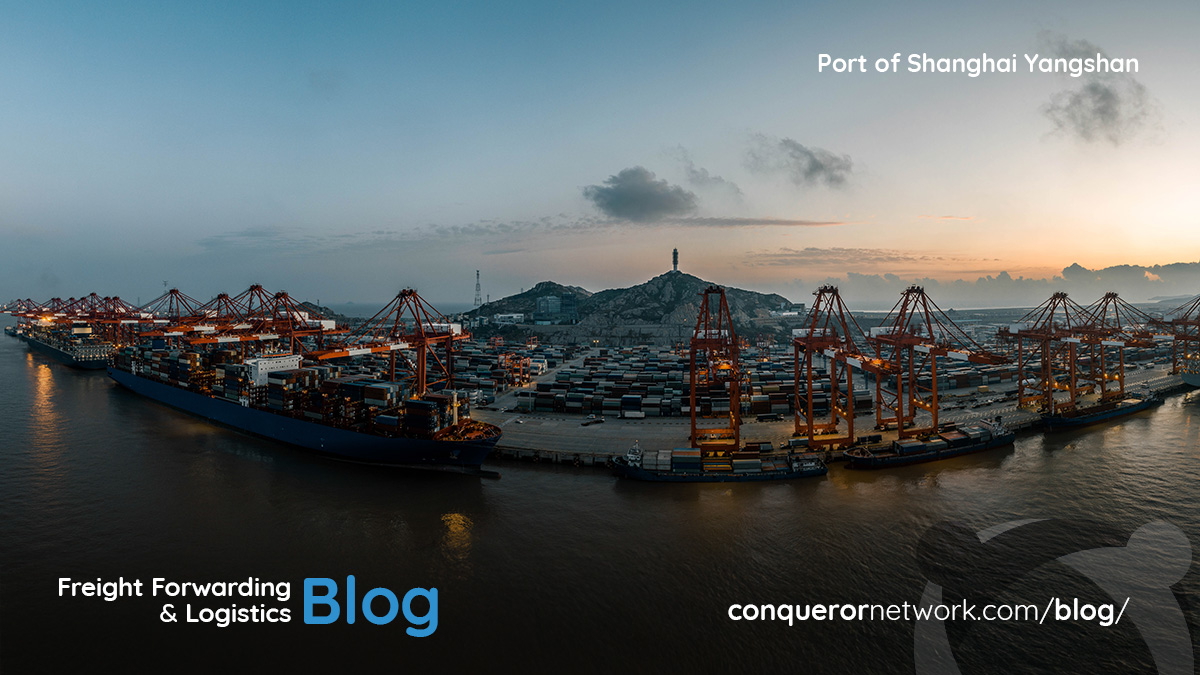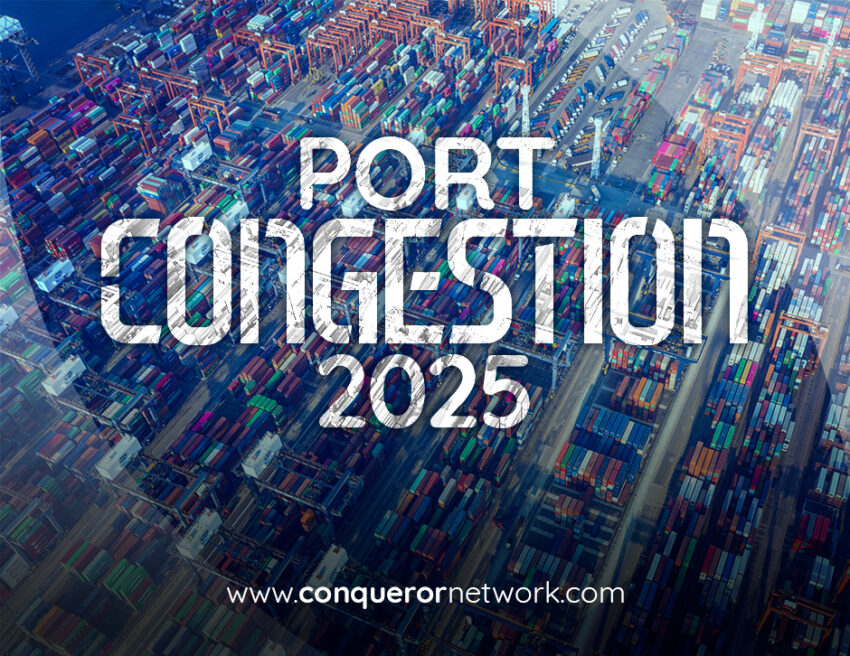A surge in cargo volumes, ongoing labor shortages, and outdated infrastructure have combined to create severe bottlenecks, particularly at ports along key trade routes connecting Asia with North America and Europe. Many of the world’s busiest maritime hubs are operating at or beyond capacity, leading to extended vessel wait times, port omissions, and scheduling chaos. These delays are pushing freight costs higher and placing immense pressure on warehouse space, especially near coastal logistics zones. Additionally, trucking and intermodal services are struggling to keep up, compounding inland transportation issues.

Complicating matters further are frequent labor strikes and geopolitical tensions, which have disrupted port operations in regions such as the Red Sea, the U.S. West Coast, and Northern Europe. Even ports that have implemented digitalization and automation face difficulty in fully mitigating the effects of these systemic stresses.
For freight forwarders, staying ahead means closely monitoring port conditions, diversifying routing strategies, and working with flexible logistics partners to reduce the risks of costly disruptions. In a year marked by unpredictability, proactive supply chain planning is more essential than ever.
Drivers and Trends in Port Congestion for 2025
Despite investments in digitalization and infrastructure, delays persist due to a combination of internal inefficiencies and external disruptions. Understanding the root causes and emerging trends is critical for logistics professionals seeking to navigate this evolving landscape.
Rising Average Wait Times
Ports across major global trade routes are reporting unprecedented vessel wait times—some as high as 300% above the historical average. These extended delays reflect a combination of strained yard capacity, slow container processing, and insufficient labor availability. The result is a growing backlog that disrupts shipping schedules and increases demurrage charges for shippers.
Labor Disruptions
Labor shortages and industrial action continue to cripple operations at key ports in North America and Europe. In 2025, strikes by dockworkers, truck drivers, and customs officials have led to significant slowdowns and even complete halts at major hubs. Freight forwarders are being forced to reroute shipments, absorb higher costs, and brace for increased transit times.
Aging and Inadequate Infrastructure
Many ports, especially in developing regions such as Africa and Southeast Asia, are struggling with infrastructure that hasn’t kept pace with container growth. Limited berth space, outdated handling equipment, and lack of rail connectivity are contributing to persistent bottlenecks, especially as vessel sizes and shipment volumes grow.
Surge in Global Shipping Demand
The combination of post-pandemic recovery, restocking cycles, and booming e-commerce activity has resulted in record-high container volumes. Ports are overwhelmed by the sheer number of inbound and outbound containers, leading to yard congestion, equipment shortages, and missed transshipment windows.
Climate and Weather-Related Disruptions
Extreme weather events are playing an increasingly disruptive role. Typhoons in the Pacific, hurricanes in the Americas, and seasonal flooding have forced temporary port closures and damaged infrastructure. These climate-related disruptions not only delay shipments but also reduce port throughput capacity for weeks at a time.
Regional Trade Surges
Emerging trade corridors, particularly in East Africa, the Middle East, and parts of Europe, are seeing explosive growth in transshipment and regional exports. However, many of these ports lack the readiness to handle surging activity, leading to sudden and prolonged congestion that reverberates throughout regional supply chains.
Geopolitical Instability and Regulatory Changes
Tensions in the Red Sea, evolving EU carbon regulations, and realignments in global sourcing have increased uncertainty for international shipping. Ports in politically volatile areas are under mounting pressure, facing both reduced reliability and stricter compliance demands, further straining throughput efficiency.
The Most Congested Ports in 2025
Port of Los Angeles / Long Beach, USA
Why it’s congested:
Despite improved automation, labor strikes in early 2025 and ongoing trucking shortages have caused major delays. High transpacific demand and increased container imports from Asia continue to overwhelm the terminals.
Impact:
Extended dwell times, rising demurrage charges, and delays in final-mile distribution across North America.
Port of Shanghai, China
Why it’s congested:
A record surge in exports, combined with sporadic COVID-related slowdowns and limited yard space, has resulted in long vessel queues and equipment shortages.
Impact:
Delays in outbound cargo to Europe and the U.S., making schedule reliability a challenge for forwarders.
Port of Rotterdam, Netherlands
Why it’s congested:
The EU’s new green shipping regulations (including CBAM) and stricter customs compliance have increased inspection times. Additionally, an influx of regional transshipment has pushed the port beyond capacity.
Impact:
Significant container backlogs and rerouting to secondary European ports.
Port of Singapore
Why it’s congested:
A major hub for global transshipment, Singapore has been affected by vessel bunching, infrastructure strain, and severe weather disruptions in early 2025.
Impact:
Backlogs in regional connections and increased pressure on neighboring Southeast Asian ports.
Port of Jebel Ali, UAE
Why it’s congested:
Booming trade between Asia, Africa, and Europe has led to intense traffic at this Middle Eastern hub. The port is also managing increased demand due to Red Sea diversions.
Impact:
Longer turnaround times and challenges for regional freight distribution.
Port of New York and New Jersey, USA
Why it’s congested:
High East Coast import volumes, combined with limited warehouse capacity and landside congestion, continue to slow down operations.
Impact:
Delays in customs clearance and delivery bottlenecks across the U.S. Northeast.
Port of Hamburg, Germany
Why it’s congested:
Infrastructure limitations and regional strikes have strained operations. Increased intra-European shipments post-Brexit have also contributed to port congestion.
Impact:
Slower turnaround for EU-bound cargo and growing reliance on alternative ports like Antwerp or Le Havre.
Port of Durban, South Africa
Why it’s congested:
Severe weather damage, aging infrastructure, and labor shortages have drastically reduced efficiency in one of Africa’s key maritime gateways.
Impact:
Major slowdowns in cargo flow to and from Southern Africa, forcing some forwarders to shift to air freight alternatives.
Port of Santos, Brazil
Why it’s congested:
Rising agricultural exports and container traffic, combined with inadequate modernization, have overwhelmed South America’s busiest port.
Impact:
Increased lead times for exports, particularly for perishables, and rising inland transport costs.
10. Port of Manila, Philippines
Why it’s congested:
Limited port expansion, a rapid surge in e-commerce imports, and poor intermodal connectivity have resulted in consistent congestion.
Impact:
Delays in delivery of consumer goods and rerouting to nearby regional ports like Batangas or Subic Bay.
What Port Congestion 2025 This Means for Freight Forwarders
The continued congestion at these major ports reinforces the need for proactive logistics planning. Here’s how forwarders can mitigate the impact:
-
Diversify Port Options: Identify alternative ports with lower congestion risks.
-
Use Real-Time Tracking Tools: Monitor vessel queues and yard conditions.
-
Communicate Early with Clients: Set realistic delivery expectations and plan for potential delays.
-
Explore Intermodal Solutions: Combine sea, rail, and road transport to speed up last-mile delivery.
-
Join a Reliable Logistics Network: Collaborate with trusted agents worldwide to improve cargo routing and contingency planning.


